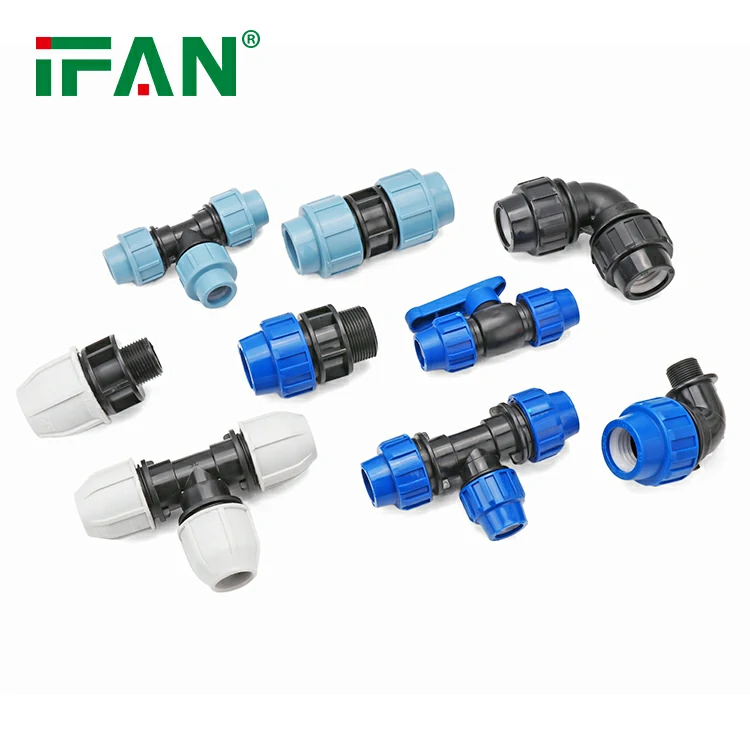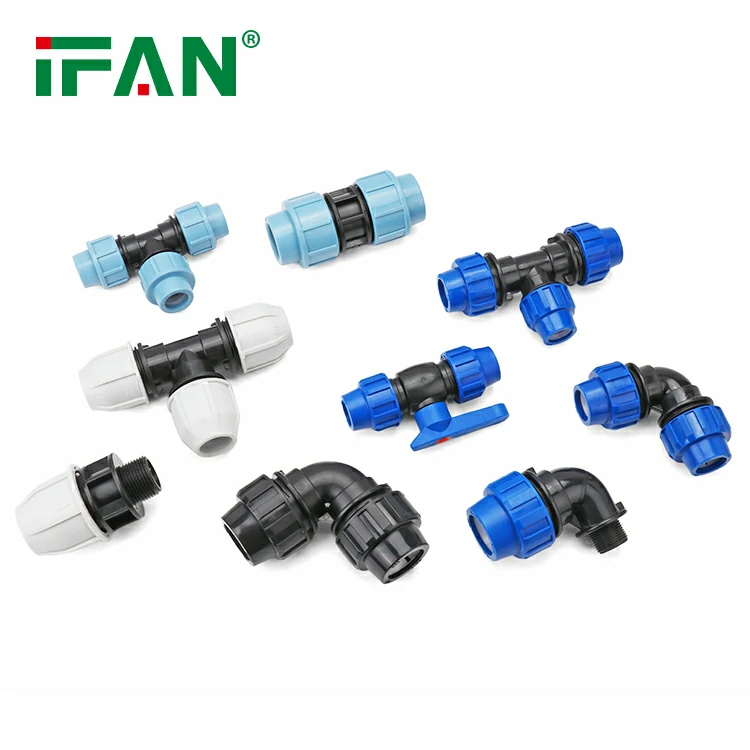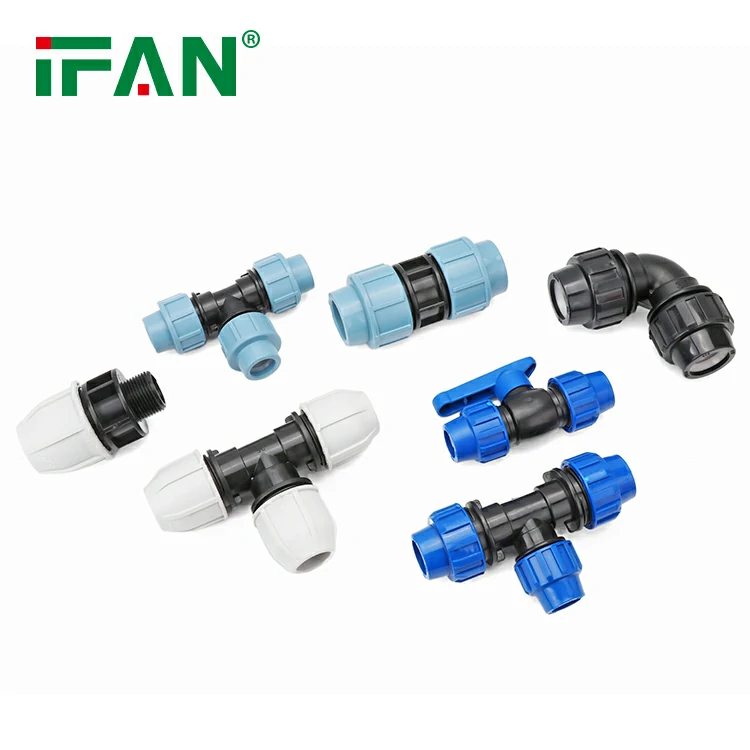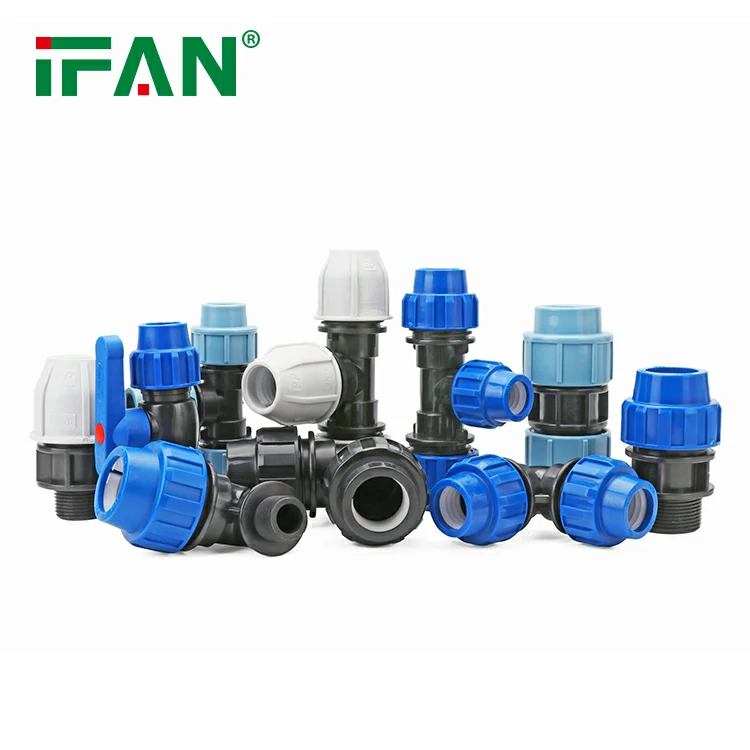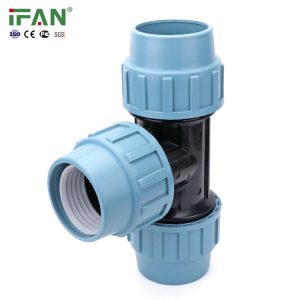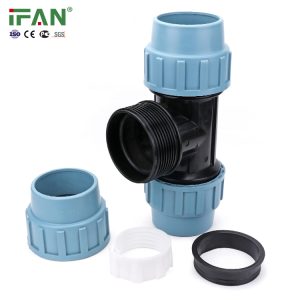Description
IFAN factory 30+ years manufacture experience support color /size customization support free sample.Welcome to consult for catalog and free samples.This is our Facebook Website:www.facebook.com,Click to watch IFAN’s product video.Compared with Tomex products, our IFAN products from quality to price are your best choice, welcome to buy!
In today’s world, sustainability has become a priority in every sector, including water distribution. A key factor in promoting sustainable water management is the use of HDPE fittings. High-Density Polyethylene (HDPE) fittings offer significant advantages in the construction of water distribution systems. Their durability, cost-effectiveness, and resistance to environmental factors make them a top choice for sustainable water infrastructure. In this article, we will explore the role of HDPE fittings in sustainable water distribution, how they contribute to long-term water conservation, and the environmental benefits they provide.
What Are HDPE Fittings?
HDPE fittings are components used in the connection of HDPE pipes, which are widely used in water distribution, sewage, and other industrial applications. HDPE (High-Density Polyethylene) is a durable, flexible, and chemically resistant plastic material. HDPE fittings are typically available in various types, such as elbows, tees, couplings, flanges, reducers, and more, designed to connect pipes, change the direction of flow, or reduce the pipe size in a system.
These fittings are made to withstand high-pressure environments, corrosive chemicals, and extreme weather conditions, making them highly suitable for water distribution projects.
Key Advantages of HDPE Fittings in Sustainable Water Distribution
1. Durability and Longevity
One of the major benefits of HDPE fittings in water distribution is their remarkable durability. These fittings are resistant to corrosion, rust, and other forms of deterioration that commonly affect metal fittings. Since water distribution systems are often exposed to harsh environmental conditions, the durability of HDPE fittings ensures that the system can operate efficiently for decades without requiring frequent repairs or replacements.
The long lifespan of HDPE fittings helps to reduce the need for constant maintenance, making them a more sustainable option for water infrastructure projects. Fewer repairs mean less waste and a more sustainable approach to water management.
2. Low Environmental Impact
HDPE fittings are made from a non-toxic and recyclable material, which means they have a low environmental impact throughout their lifecycle. From production to disposal, HDPE fittings contribute to reducing the carbon footprint of a water distribution system. Unlike metal fittings, which require mining and significant energy input during production, HDPE fittings have a much smaller environmental footprint.
Moreover, HDPE itself is 100% recyclable, which means that at the end of the fitting’s life cycle, it can be reused, further promoting sustainability. This recycling capability helps conserve natural resources and minimizes the need for new materials, contributing to a circular economy.
3. Reduced Leakage and Water Loss
Water loss due to leakage is a significant challenge in traditional water distribution systems, leading to wasted resources and unnecessary energy consumption. HDPE fittings are designed to create leak-proof joints, which significantly reduce the risk of leaks in the system. This is crucial for water conservation and ensuring that the resources are used efficiently.
The ability to tightly seal joints and connections in the water distribution system reduces water wastage, contributing to more sustainable water management practices. By preventing leaks, **HDPE fittings** help conserve water and reduce the need for additional water supply.
4. Energy Efficiency
The installation of HDPE fittings can lead to improved energy efficiency in water distribution systems. Since HDPE pipes and fittings are highly resistant to corrosion and scaling, they maintain smooth internal surfaces over time. This smoothness reduces friction within the pipes, which helps maintain efficient water flow and reduces the amount of energy required to pump water through the system.
A reduction in friction and resistance results in lower energy consumption, which not only saves costs but also decreases the environmental impact of water distribution. HDPE fittingshelp to promote a more sustainable water system by lowering energy usage and associated greenhouse gas emissions.
5. Flexibility and Adaptability
HDPE fittings are highly flexible and can adapt to various environmental conditions, including ground movements, temperature fluctuations, and soil shifts. This flexibility reduces the likelihood of damage to the water distribution system during seismic events or extreme weather conditions, contributing to long-term sustainability.
The ability of HDPE fittings to expand and contract without cracking or breaking makes them ideal for areas prone to ground movement or temperature variations. This reduces the need for repairs and replacements, making the system more resilient and reducing the overall environmental impact.
6. Cost-Effectiveness
While the initial cost of HDPE fittings may be slightly higher compared to traditional materials, their durability, long lifespan, and low maintenance costs make them a cost-effective option in the long run. Fewer replacements and repairs translate into cost savings over the lifetime of the system, ultimately making HDPE fittings a more sustainable choice for water distribution projects.
Additionally, the ease of installation and the reduced need for specialized labor further lower the overall costs of HDPE-based systems. By investing in HDPE fittings, municipalities and companies can achieve both economic and environmental benefits.
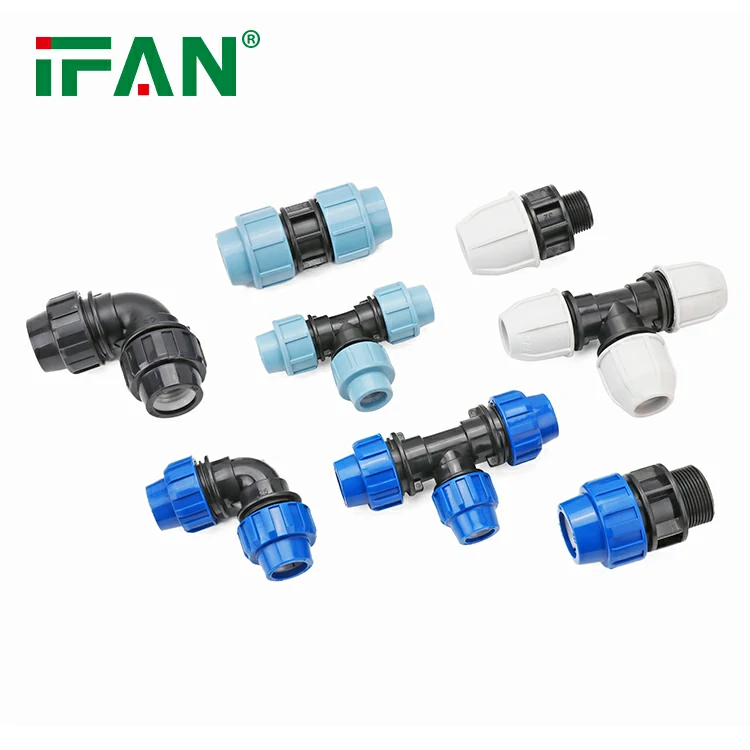
Applications of HDPE Fittings in Water Distribution
1. unicipal Water Supply Systems
HDPE fittings are widely used in municipal water supply systems due to their ability to withstand high-pressure environments, resist corrosion, and provide a leak-free connection. These systems are essential for providing clean water to communities, and HDPE fittings help ensure that water is delivered safely and efficiently.
2. Agricultural Irrigation Systems
In agricultural settings, where water conservation is critical, HDPE fittings are used for irrigation systems. These systems require high-quality fittings that can handle pressure and prevent leaks, ensuring efficient water distribution to crops. **HDPE fittings** help reduce water loss and make irrigation systems more sustainable.
3. Industrial Water Systems
Many industries rely on water for cooling, processing, and cleaning. HDPE fittings are ideal for industrial water systems because they can handle a variety of chemicals, resist scaling, and maintain a long lifespan. This makes them a sustainable option for industries looking to minimize their environmental impact and ensure a steady, reliable water supply.
Conclusion
HDPE fittings play a crucial role in promoting sustainable water distribution systems. Their durability, low environmental impact, energy efficiency, and flexibility make them an excellent choice for projects aiming to conserve water, reduce waste, and minimize energy consumption. By utilizing HDPE fittings, municipalities, industries, and agricultural sectors can contribute to a more sustainable future for water distribution.
Frequently Asked Questions (FAQs)
1. What are the main benefits of using HDPE fittings in water distribution systems?
HDPE fittings provide durability, reduced water leakage, energy efficiency, and a low environmental impact. They are also resistant to corrosion and offer a long lifespan, reducing the need for frequent maintenance and repairs.
2. Are HDPE fittings recyclable?
Yes, HDPE fittings are made from recyclable materials. Once the fittings have reached the end of their life cycle, they can be recycled and repurposed, contributing to sustainability.
3. How do HDPE fittings help reduce water loss?
HDPE fittings*create leak-proof connections, which minimize the risk of water loss from leaks in the distribution system. This helps conserve water and improve overall efficiency.
4. Can HDPE fittings be used for both hot and cold water systems?
Yes, HDPE fittings are suitable for both hot and cold water systems. They are resistant to a wide range of temperatures and can handle the thermal expansion and contraction of water systems.
5. What makes HDPE fittings environmentally friendly?
HDPE fittings are made from a non-toxic, recyclable material, which reduces their environmental impact. They are also resistant to corrosion, meaning they last longer and require fewer replacements, contributing to overall sustainability.
Related products


